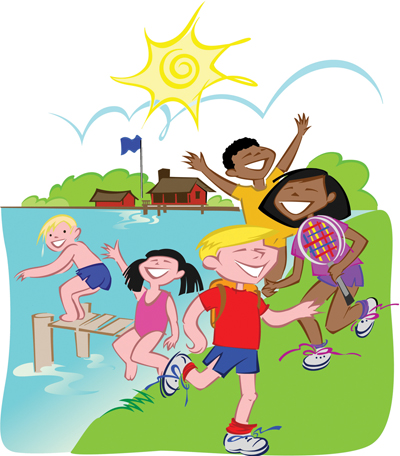Emergency-room professionals have their own name for the long, lovely, lazy days that kids look forward to in summer: trauma season. Because that’s when hospitals see a spike in drownings and heat-related accidents.
Emergency-room professionals have their own name for the long, lovely, lazy days that kids look forward to in summer: trauma season. Because that’s when hospitals see a spike in drownings and heat-related accidents.
Here are some of the biggest misconceptions about popular summertime activities, according to several experts.
MYTH
Pool parties are safe as long as adults are around.
FACT
Many drownings happen when adults are close by. The problem is too much commotion. The key is to have a designated adult watching the water because that is where the danger is. The pool should be free of excess toys that can block the view of the water.
MYTH
You don’t have to worry about sunburn on cloudy days.
FACT
You can get a severe sunburn on a cloudy day. Overcast weather, no matter how cloudy, doesn’t affect how much harmful UV exposure someone receives. The American Academy of Pediatrics advises using clothing and hats to avoid sun exposure, particularly for babies younger than 6 months, and applying sunscreen of at least 15 SPF that protects against UVA and UVB rays. Sunscreen should be applied at least 30 minutes before going outside and reapplied every two hours or after swimming or sweating.
MYTH
Heat isn’t a problem until July or August, when temperatures peak.
FACT
Heat exhaustion and heat stroke are more prevalent early in the season, because our bodies haven’t had a chance to acclimatize.
MYTH
Floaties keep little ones safe in the water.
FACT
Floaties are designed for fun, not safety. They give a false sense of security, can deflate and can slip off.
MYTH
The kids will be fine in the pool for the short time it takes to answer the phone or get a cold drink.
FACT
In a minute, a child can go under water. In two or three minutes, the child can lose consciousness. In four or five, the child could suffer irreversible brain damage or die. According to the Centers for Disease Control and Prevention, drowning is the second-leading cause of unintentional, injury-related death for children 1 to 14 years old, second only to car and transportation-related accidents.
MYTH
Children need to drink only when they are thirsty.
FACT
By the time a child is thirsty, he or she may already be dehydrated. If a child weighs 100 pounds or less, he or she should be drinking five or six ounces of water or sports drink every 15 minutes or so.
MYTH
It’s safe to keep kids in car seats when the driver gets out for a quick errand.
FACT
The temperature inside a car can rise quickly in the summer, leading to brain damage, kidney failure and death in minutes.
When outside temperatures are between 80 F to 100 F, the temperature inside a car can quickly rise to more than 170 F.
With an outdoor temperature of 83 F, internal car temperatures can reach 109 F within 15 minutes, even with windows rolled down two inches.
Children are less able to handle extreme heat than adults.
MYTH
Loving parents or caregivers would never forget a child in a car.
FACT
It happens in the U.S. as many as 15 to 25 times a year from spring through early fall when children fall asleep in the back seat and stressed and preoccupied parents forget them, according to The Washington Post. Products such as the Cars-N-Kids Car Seat Monitor can remind a parent; the $40 device plays a lullaby on sensing a child’s weight after the car has stopped.
Experts at KidsAndCars.org also recommend visual cues, including putting a stuffed animal in the child’s car seat when it’s not occupied and moving the toy up front in the passenger seat when the child is in the car. The stuffed animal in the passenger seat is a reminder that the child is in the back.










